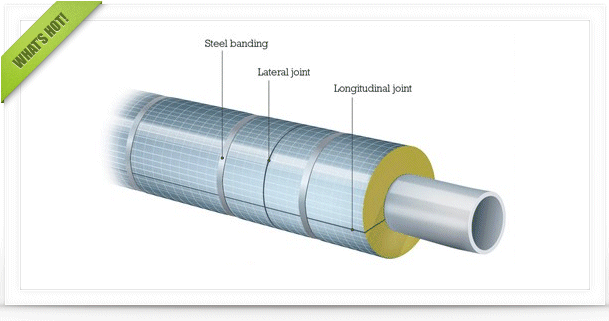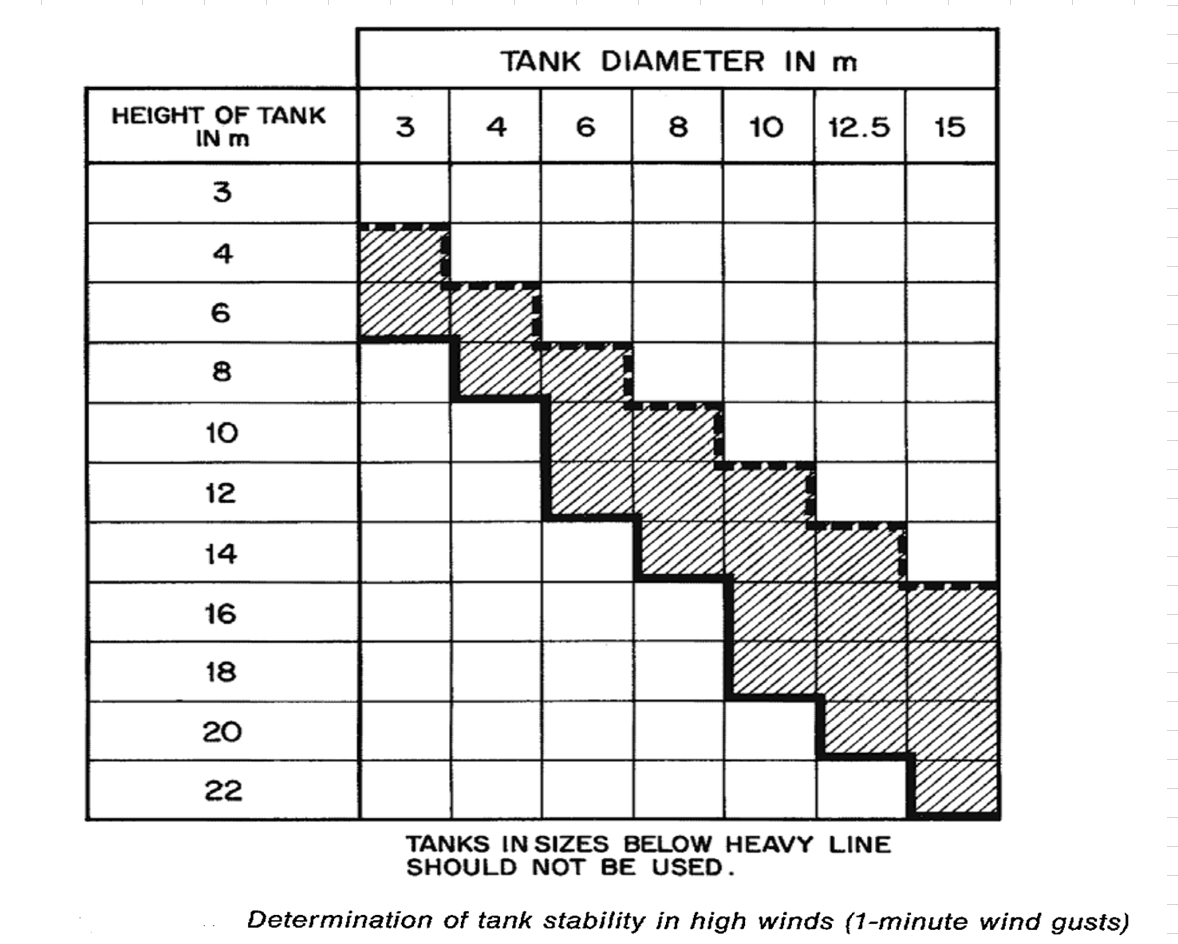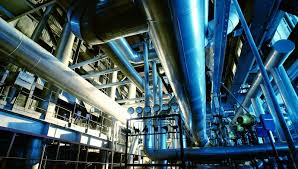|
|
Stack Height
#1

Posted 24 November 2011 - 03:56 AM
I am now day working on circulating fluidized boiler project based on local coal. The guaranteed emisions of boiler are as below
SOx 400 mg/Nm3
NOx 280 mg/Nm3
Dust 50 mg/Nm3
I have to size the stack height for this project. can body guide me what should be the minimum stack height is??? Can reference calculations to it.
Is there any dispersion calculation software availble for stack sizing.pls inform
Thanks
#2

Posted 24 November 2011 - 06:48 AM
Let you consider this simple model .
Hope it helps
Breizh
#3

Posted 24 November 2011 - 06:59 AM
There are software available in market for the dispersion analysis. Generally this type of software used by the properitery equipment vendor like Flare system, Boiler flue gas analysis etc.
List of widely used software are as below :
SHELL FRED
DNV PHAST
If u are dealing for a new boiler system then flare stack height requirement shall be done by boiler supplier only.
I have seen in IPS standard ( IRANIAN PETROLEUM INDUSTRIES ) that minimum stack height shall be 76 m. But recently, i come across with one steam boiler package system in that existing stack height is 25 m & new also they are considering same 25 m.
Regards,
#4

Posted 24 November 2011 - 01:06 PM
It is not easy to apply a complex dispersion model, in case of no previous practice. If so, study of the fundamentals from a book and application of a simple Gaussian dispersion model had better be done in advance. I have heard of some version of Phast model applied here by the local University, but they had familiarity with it.
The objective is to indicate through the dispersion model that ground level concentration (glc) of noxious substances is withing limits provided by legislation. But usually the plant is in an Industrial area, where a lot of other units or industries emit gaseous effluents. It is not easy to estimate contribution of others. Applicable approach here is to indicate that the pollution by the new unit is marginal, subject to approval by authorities. For instance, max glc for a noxious substance (at certain weather stability class) is estimated at 70 , 85, 90 μg/m3 for stack heihts H = 50, 60, 70 m; one can propose H=60 m, for authorities to approve. Two ~65 ton/h industrial fuel oil boilers, installed at local industrial areas, had H=60 m, while pollutant concentrations in their flue gases were more or less same as in the mentioned boiler (SO2 a bit higher). However much depends on what local authorities will tolerate as max glc contribution of the specific unit, which will charge the area in addition to already existing units. This has to be investigated for every meteorological condition possible. Other new units installed here have also stacks of 60 m height. It is also noted that stack gas exit velocity at nominal capacity is specified here at 15 m/s (minimum).
Concerning the dispersion models, see http://atmosphericdi...odel_evaluation and http://en.wikipedia....spersion_models. Aloha was used in safety studies, judged not proper for the case of boilers. It is not easy to chose the most suitable model for the case (among the "free" ones), also depending on what meteorological data is available. A simple "hand made" excel model well understood could be more useful than a sophisticated one partially understood, as I have seen. Advice on dispersion models having worked satisfactorily for boiler stack gases or similar would be welcomed.
#5

Posted 24 November 2011 - 01:13 PM
Stack height for boilers may be calculated as per the following formula:
H = 14 * (SO2 in flue gas in kg / h)0.3
where:
H = height of stack in meters
If the fuel consumption is A kg/h and sulphur content in fuel is x% then 1 kg of fuel will give 2x% SO2
Thus the term in the bracket will become
(A*(2x /100))
The reference for the above formula is the "Indian Boiler Regulation" code also known as IBR code.
Hope this helps.
Regards,
Ankur.
Edited by ankur2061, 24 November 2011 - 01:21 PM.
#6

Posted 24 November 2011 - 01:33 PM
I have used (and still using) ADMS http://www.cerc.co.u...ADMS-model.html for dispersion modelling of pollutants for open vents for calculating the Ground Level Concentration as a function of distance from stack (as Kostas mentioned). It has a list of common pollutants (like NOx and SO2) and can be customised for any new pollutant as the case arises.
To use such software, you require the atmospheric conditions at the plant (usually available from local meteorological office).
The UK guidelines on workplace exposure limits can be found here http://www.hse.gov.uk/coshh/table1.pdf
#7

Posted 24 November 2011 - 01:40 PM
A quick estimation of ground level concentration is available in the form of a blog article and a downloadable spreadsheet at the following link:
http://webwormcpt.bl...el-unburnt.html
Regards,
Ankur.
#8

Posted 29 November 2011 - 04:10 AM
Thanks
#9

Posted 29 November 2011 - 05:54 AM
#10

Posted 01 December 2011 - 06:42 AM
if it is concrete then special bricks or cement required ???
if it is steel then of what type & is it required with some linning material. or we have to go stainless steel stack.
Thanks
#11

Posted 02 January 2012 - 02:09 AM
As per excel sheet provided by you , how one will ensure that this much height will be sufficient by calculating the ground level concentration.
Means to say how i decide this height is enough.
thanks
#12

Posted 02 January 2012 - 09:36 PM
The calculation is done to minimize the risk for people meaning the reference to ground level . Now regarding height you may have constrain like regulation wich can impose minimum height according to the type and concentration of pollutants.
Hope this helps.
Breizh
#13

Posted 02 January 2012 - 10:28 PM
Can you quote your above statement with some example, concentration w.r.t distance
how distance to be defined for measuring conc. 1 km,2 km etc
#14

Posted 03 January 2012 - 01:06 AM
Hope this document will make it clearer !
Breizh
#15

Posted 03 January 2012 - 01:23 AM
if we have below emissions from boiler
SOx 400 mg/Nm3
NOx 280 mg/Nm3
Dust 50 mg/Nm3
what will be the stack height for this case
#16

Posted 03 January 2012 - 08:14 AM
Of course this height has to be finally verified (or even modified) by a dispersion model and be approved by authorities. See previous post No 4. Approved stack height for an identical unit can be different from country to country, even from location to location.
Approved stack heights in the broader industrial area of the factory (plus local legislation, if any) can lead to a better assumption of the preliminary stack height.
Edited by kkala, 03 January 2012 - 02:18 PM.
#17

Posted 03 January 2012 - 11:07 PM
Attached Files
#18

Posted 04 January 2012 - 06:38 AM
This for NOx. Same action is needed for rest effluents (SO2 and particulates), to define a stack height resulting in "acceptable" glcs for all effluents.
As said in Post No 4, a new plant is usually placed in an industrial area, already polluted by existing plants. The question is whether its additional contribution to pollution is acceptable, and this is judged by the authorities giving the permit. Usually authorities are contacted for information about pollution of broader area , then stack height / specific contribution to glc is decided, then environmental studies etc are officially submitted for permit.
Situation is much easier in case that the new plant replaces an old one (the old one usually pollutes more).
So, Narnia, contact of the authority giving the permit could be the step before final stack height.
#19

Posted 04 January 2012 - 07:15 AM
As per above i perceive that the total emissions from plant including this newly installed one should be less than the allowable values.
Thanks
#20

Posted 04 January 2012 - 04:53 PM
Ground level concentrations are not very easy to find, besides they should have same basis; e.g. one hour average, meaning (to my understanding) that sampling at ground lasts one hour. It is maximum (accepted) value, not average. The longer the (sampling) time, the lower the acceptable glc, since peaks are smoothed out.
http://www.eea.europ...air%20pollution seems to support following limits of glc (ground level concentration) for NO2:
200 μg/m3 (hourly average)
40 μg/m3 (annual average)
30 μg/m3 (annual average, rural area).
For dust: PM10 40 μg/m3 (annual average).
From such data you have to make your own and support your decision. I will notify in case of finding more. Any information on permissible glcs of the pollutants referred is also welcomed.
Edited by kkala, 04 January 2012 - 05:04 PM.
#21

Posted 05 January 2012 - 12:44 AM
There are no international standards for air pollutant limits. If you notice in the previous post the link provided is for targeted air pollutant limits in the city of "Luxembourg" and not for an industrial environment such as an oil & gas installation or a thermal power plan. In the United States, air pollution is being monitored by US EPA (Environmental Protection /agency), however, each state has its own regulations and laws for air polllutants release to the atmosphere with some being more stringent and some being less. The US EPA website provides a lot of basic guidelines regarding limiting air pollutants to the atmosphere. Refer:
http://www.epa.gov/ttn/naaqs/
A couple of years ago I was working in Abu Dhabi and the national oil company, ADNOC had specified air pollutant limits in their installations as follows:
Substance Emission Limits (mg / Nm3)
Sulfur Dioxide (SO2) 500
Carbon Monoxide (CO) 500
Nitrogen Oxides 350
(Expressed as NO2)
Hydrogen Sulfide (H2S) 5
Hope this helps.
Regards,
Ankur.
Edited by ankur2061, 05 January 2012 - 12:52 AM.
#22

Posted 05 January 2012 - 01:09 AM
kindly also provide the reference distance to measure this concentration.
at what distance away from stack this concentration should be.
thanks
#23

Posted 05 January 2012 - 04:03 AM
2. Reported glcs for NO2 in post No 20 concern all areas of Luxembourg (not only the city), including an industrialized canton. These are an example to make requirements specific for the case, a rather patient task. For NOx glc=200 μg/m3 (1 hour average) is also applicable in Greece (post No 18) and probably all over EU.
3. Ground level concentrations (glcs) are of interest here (~1 hour average), not pollutant limits coming out of the stack (glcs are much lower in value).
4. I have not managed to locate glcs in EPA, specific references from it and anywhere else would help collect data to support a decision.
#24

Posted 05 January 2012 - 04:08 AM
The air pollutant limits mentioned by ADNOC are at the top of the stack (point source of emission). Based on ground level concentration permissible limits for these air pollutants as per your company's or country's rules and regulations for chemical and industrial establishments and the stack height considered you can than calculate the ground level concentration at various distances (0/5/10/20/50 m radius from point source of emission) using a dispersion software such as "Shell Fred" or "PHAST".
Another approach would be to use the ground level concentration permissible limits for your company or country for chemical and industrial establishments for calculating the stack height using the maximum ambient air pollutant emission limits provided in your country or as per the ADNOC regulations that I have mentioned in my previous post (post # 21).
Regards,
Ankur.
#25

Posted 05 January 2012 - 04:26 AM
Distance from stack covered by dispersion model can be few kilometers, depending on where max glc (average of definite time) happens.
Task may be more complex, refer to posts No 4 and 18.
Similar Topics
High Stack Temperature In Ccr HeatersStarted by Guest_viba0124_* , 30 Nov 2024 |
|

|
||
Alkaline Electrolytic Cell/stack Sizing/design For H2 ProductionStarted by Guest_BRS09_* , 13 Mar 2025 |
|

|
||
Kettle Reboiler Designe Rules - Position Weir, Height Weir, Liquid LevStarted by Guest_Otthigh94_* , 17 Jan 2024 |
|

|
||
Gas Seal In Hydrogen Vent StackStarted by Guest_Afshin445_* , 27 Dec 2023 |
|

|
||
Controlled Type Blowdown Through Vent Stack, Reach Mach 1Started by Guest_x127127@hotmail.com_* , 16 Dec 2017 |
|

|

 FB
FB











